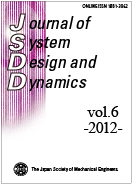6 巻, 2 号
選択された号の論文の8件中1~8を表示しています
- |<
- <
- 1
- >
- >|
Papers
-
2012 年6 巻2 号 p. 131-144
発行日: 2012年
公開日: 2012/04/27
PDF形式でダウンロード (546K) -
2012 年6 巻2 号 p. 145-157
発行日: 2012年
公開日: 2012/04/27
PDF形式でダウンロード (1466K) -
2012 年6 巻2 号 p. 158-169
発行日: 2012年
公開日: 2012/04/27
PDF形式でダウンロード (536K) -
2012 年6 巻2 号 p. 170-185
発行日: 2012年
公開日: 2012/04/27
PDF形式でダウンロード (684K) -
2012 年6 巻2 号 p. 186-199
発行日: 2012年
公開日: 2012/04/27
PDF形式でダウンロード (446K) -
2012 年6 巻2 号 p. 200-212
発行日: 2012年
公開日: 2012/04/27
PDF形式でダウンロード (1224K) -
2012 年6 巻2 号 p. 213-226
発行日: 2012年
公開日: 2012/04/27
PDF形式でダウンロード (1001K) -
2012 年6 巻2 号 p. 227-239
発行日: 2012年
公開日: 2012/04/27
PDF形式でダウンロード (420K)
- |<
- <
- 1
- >
- >|
